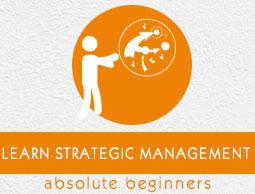Vertical Integration Strategies
Vertical integration (VI) is used strategically to gain control over the industry’s value chain. The important issue to consider is, whether the company participates in one activity (one industry) or many activities (many industries).
For example, a company may choose that it only manufactures its products or would get involved in retailing and after-sales services too. Two issues have to be considered before integration −
Costs − An organization must integrate vertically when costs producing inside the company are less than the costs of availing that product in the market.
Scope of the firm − It is necessary to think over the fact, whether moving into new industries would not dilute its current competencies. New activities are often harder to manage and control. These factors contribute to a decision if a company will pursue none, partial or full VI.
Types of Vertical Integration
There are usually two types of VI −
Forward Integration
Engaging in sales or after-sales industries for a manufacturing company, it is a forward integration strategy. This strategy is used to achieve higher economies of scale and larger market share. Forward integration strategy is boosted by internet. Many companies have built their online stores and started selling their products directly to consumers, bypassing retailers.
Forward integration strategy is effective when −
- Few quality distributors exist in the industry.
- Profit is high for distributors or retailers.
- Distributors are very expensive, unreliable or unable to offer quality service.
- The industry is going to grow significantly.
- Stable production and distribution is possible.
- The company has vast resources and capabilities to manage the new business.
Backward Integration
If a manufacturing company starts creating intermediate goods for itself or buys its previous suppliers, it is a backward integration strategy. It is used to secure stable input of resources and become more efficient.
Backward integration strategy is most beneficial when −
- Existing suppliers are unreliable, expensive or unable to provide the required inputs.
- Only a few small suppliers but several competitors exist in the industry.
- Industry is in rapid expansion mode.
- Price and inputs become unstable.
- Suppliers earn very high profit margins.
A company has the needed resources and capabilities to maintain the new business.
Advantages of VI Strategy
- Lower costs as market transaction costs are diminished.
- Greater quality of supplies.
- VI can make critical resources available.
- Better coordination in supply chain becomes possible.
- Provides a bigger market share.
- Secured distribution channels.
- It enhances investment in specialized assets (site, physical-assets and human-assets).
- New competencies.
Disadvantages of VI Strategy
- Higher costs, in case, the company cannot manage new activities efficiently.
- May lead to lower quality products and reduced efficiency as competition recedes.
- Reduced flexibility due to increased bureaucracy and higher investments.
- Higher potential for legal repercussion due to size.
- New competencies and old ones may collide and lead to competitive disadvantage.


